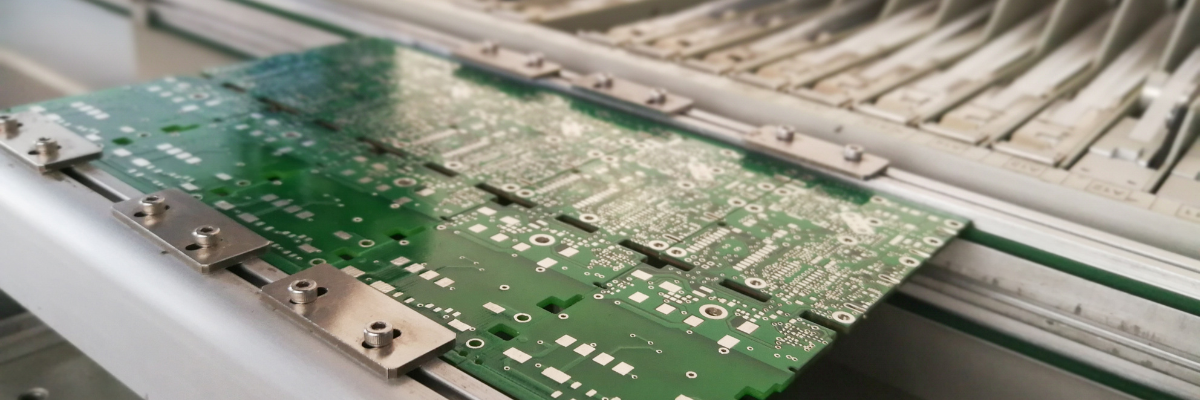Deciding between IPC-6012 or IPC-A-600: A Guide to Choosing the Right Standard for Your PCB Project

Deciding between IPC-6012 or IPC-A-600: A Guide to Choosing the Right Standard for Your PCB Project
When it comes tothe manufacturing of printed circuit boards (PCBs), two prominent standardsserve as industry guides: IPC-6012 and IPC-A-600. These standards offercomprehensive guidelines and requirements to guarantee the quality andreliability of PCBs. However, manufacturers and engineers need to understandthat these standards are designed for different purposes. By understanding thedistinctions between IPC-6012 and IPC-A-600, professionals can make informeddecisions on which standard best suits their specific needs. In this post, wewill look into the significance of both standards while highlighting their keydifferences.
Overview of IPC Standards for PCB Manufacturing
The IPC standard isa globally accepted and widely dependent set of guidelines and requirements inthe electronics industry. These comprehensive standards encompass multipleaspects of PCB manufacturing, including design, materials, fabricationprocesses, assembly, and testing. Following the instructions and specificationsgiven in the standard carefully guarantees uniformity and excellence across theentire PCB production process.
The following points depict the significance of IPC standards during the manufacturing of PCBs.
-
Following IPC standards is highly advisable inguaranteeing the compatibility and interchangeability of printed circuit boards(PCBs) across manufacturers. These standards establish precise requirements andspecifications, facilitating the production of PCBs that are compatible acrossbrands. Such an approach simplifies the integration and assembly process ofPCBs into larger electronic systems, minimizing the necessity forcustomizations or modifications.
-
One of the main benefits of IPC standards is theirability to bring in consistency and uniformity in PCB manufacturing processes.These standards establish precise guidelines for design, materials,fabrication, and assembly, allowing manufacturers to adopt a standardizedapproach. By adhering to these guidelines, errors, defects, and inconsistenciesin PCB production can be minimized, ultimately leading to improved productquality and reliability.
-
Moreover, adherence to IPC standards plays a crucialrole in enhancing the safety and compliance of PCBs. These well-definedstandards include comprehensive guidelines on electrical, mechanical, andthermal aspects, thus ensuring that PCBs satisfy specific safety requirementsand regulatory mandates. By complying with IPC standards, manufacturers notonly safeguard the well-being of end-users but also avoid potential legalissues.
-
IPC standards play a vital role in facilitating continuous improvement in the PCB production process. These standards undergoregular review and updates to integrate the latest technological advancementsand industry practices. By adhering to the most recent IPC standards,manufacturers can remain at the forefront of the industry and leveragecutting-edge manufacturing techniques that lead to the production of the finestquality product.
Selection Between IPC-6012 or IPC-A-600
With the discussionabove, you know the significance of IPC standards. Now, let us delve intounderstanding the major difference between IPC-6012 and IPC-A-600.
-
The IPC-6012 specification serves as a comprehensivedocument that outlines the essential requirements for designing, fabricating,and ensuring the performance of rigid PCBs. It covers a wide range of aspects including materials, construction techniques, electrical and mechanicalcharacteristics, as well as quality assurance measures. In contrast, IPC-A-600standard is an indispensable resource for visually inspecting and determiningthe acceptability of PCBs based on specific criteria. This standard providesguidelines for evaluating important factors such as surface conditions, holequality, conductor spacing, solderability, and component placement, amongothers.
-
IPC-6012 provides more in-depth details ofmaterials, construction techniques, and performance criteria, making it avaluable resource for PCB manufacturers seeking comprehensive guidance. Incontrast, IPC-A-600 primarily emphasizes visual and dimensional aspects,providing clear guidelines on what is considered acceptable or rejectable basedon visual inspections.
-
IPC-A-600 and IPC-6012 serve different purposes within the industry. A widely recognized standard, IPC-A-600 is utilized by OEMs, contract manufacturers, and PCB fabricators to thoroughly examine andassess printed circuit boards (PCBs) for adherence to industry criteria. Itsprimary objective is to guarantee that PCBs are manufactured and assembledaccurately. On the other hand, IPC-6012 mainly serves as a reference for PCB fabricators during the fabrication and qualification processes of rigid PCBs.
-
In addition, it is important to aware that IPC-6012and IPC-A-600 have distinct revision levels and release dates. As of 2023, thelatest revision for IPC-A-600 is IPC-A-600K, which was published in July 2020and for IPC-6012, the latest revision is IPC-6012E, which was published in March 2020. It is crucial to stayinformed about the precise revision of each standard and any potential updatesor modifications implemented subsequent to their initial release.
Needless to say,both IPC-6012 and IPC-A-600 are extremely important standards to consider for PCB production. As mentioned earlier, IPC-6012 covers the requirements for designing and fabricating PCBs, while IPC-A-600 serves as a reference document for inspecting the final product. The right choice depends on the specific requirements and quality expectations of your project. In case you are indoubt, it is highly recommended to consult with industry experts such asTwisted Traces and evaluate your manufacturing needs carefully before making adecision. By wisely making a choice, you can ensure the highest quality andreliability for your PCBs.

